Our Methods In Healing
Exerci tation ullamcorper suscipit lobortis nisl ut aliquip ex ea commodo non habent claritatem insitamconsequat duis autem facilisis at vero eros
- Sugar Testing
- HBA1C Testing
- salt Testing
- Urine Testing
- Liver Testing
- full body checkup
- harmone test for male and female
- vitamin test
- HIV testing
- dengue fever testing
- cholesterol testing
- jaundice testing
- Thyroid testing
- Sperm count testing
- ELISA testing
- chikungunya testing
- TPHA testing
- VDRL testing
- HCV testing
- HAV testing
- HBsAg testing
Blood sugar testing: Why, when and how

Blood sugar testing is an important part of diabetes care. Find out when to test your blood sugar, how to use a blood sugar meter and more.
If you have diabetes, self-testing your blood sugar (blood glucose) can be an important tool in managing your diabetes and preventing complications. You can test your blood sugar at home with a portable electronic device called a blood sugar meter using a small drop of your blood. You can also use a device called a continuous glucose monitor (CGM).
When to test your blood sugar:
Your health care provider will let you know how often to check your blood sugar levels. The frequency of testing usually depends on the type of diabetes you have and your treatment plan.
Type 1 diabetes
Your health care provider may recommend blood sugar testing 4 to 10 times a day if you have type 1 diabetes. You may need to test:
- Before meals and snacks
- Before and after exercise
- Before bed
- During the night (sometimes)
- More often if you’re ill
- More often if you change your daily routine
- More often if you start a new medication
Type 2 diabetes
If you take insulin to manage type 2 diabetes, your health care provider may recommend blood sugar testing several times a day, depending on the type and amount of insulin you use. Testing is usually recommended before meals and at bedtime if you’re taking multiple daily injections. You may need to test only before breakfast and sometimes before dinner or at bedtime if you use just an intermediate- or a long-acting insulin.
If you manage type 2 diabetes with noninsulin medications or with diet and exercise alone, you may not need to test your blood sugar daily.
When to test your blood sugar:
Your health care provider will let you know how often to check your blood sugar levels. The frequency of testing usually depends on the type of diabetes you have and your treatment plan.
What if you have a continuous glucose monitor (CGM)?
People living with diabetes, particularly those with type 1 diabetes, may also choose to use CGMs. These devices measure your blood sugar every few minutes using a sensor inserted under the skin. These sensors are typically worn for a week or two before they need to be changed.
The newest type of continuous glucose monitor has an implanted sensor that can detect blood sugar levels for up to three months. A transmitter worn on the body sends blood sugar information wirelessly from the sensor to a smartphone app.
Some devices show your blood sugar reading at all times on a receiver, smartphone or smartwatch, and an alarm goes off if your blood sugar is going up or down too quickly. Others require that you check your blood sugar by running the receiver over the sensor periodically.
Most of these devices still require finger-stick checks to calibrate the machine. Check your device’s user’s guide to learn if you need to check, and if so, how often you need to do it.
Certain medications, such as acetaminophen (Tylenol, others), albuterol (Proair HFA, Ventolin HFA, others) and lisinopril may interfere with the accuracy of some CGM readings, particularly on older models of CGMs. Readings on newer CGMs don’t seem to be affected by standard doses of acetaminophen (up to 1,000 milligrams for an adult).
If you need to take medications that may affect the accuracy of the readings, your health care provider may recommend double-checking your CGM results with a standard blood sugar meter. Check with your health care provider about using a CGM if you’re pregnant, on dialysis or critically ill, as these conditions may affect the blood sugar readings from a CGM.
Know your target range:
Ask your health care provider what a reasonable blood sugar range is for you. Your health care provider will set target blood sugar test results based on several factors, including:
- Type and severity of diabetes
- Age
- How long you’ve lived with diabetes
- Pregnancy status
- The presence of diabetes complications
- Overall health and the presence of other medical conditions
The American Diabetes Association (ADA) generally recommends the following target blood sugar levels:
- Between 80 and 130 milligrams per deciliter (mg/dL) or 4.4 to 7.2 millimoles per liter (mmol/L) before meals
- Less than 180 mg/dL (10.0 mmol/L) two hours after meals
But the ADA notes that these goals often vary depending on your age and personal health and should be individualized.
Some people will have slightly higher blood sugar goals, including people who:
- Are age 60 and older
- Have other medical conditions, such as heart, lung or kidney disease
- Have a reduced ability to sense low blood sugar levels (hypoglycemia unawareness)
How to test your blood sugar:
Blood sugar testing requires the use of a blood sugar meter. The meter measures the amount of sugar in a small sample of blood, usually from your fingertip, that you place on a disposable test strip. Even if you use a CGM, you’ll still need a blood sugar meter to calibrate your CGM device daily.
Your health care provider or certified diabetes care and education specialist can recommend an appropriate device for you. He or she can also help you learn how to use your meter.
Follow the instructions that come with your blood sugar meter. In general, here’s how the process works:
- Wash and dry your hands well. (Food and other substances can give you an inaccurate reading.)
- Insert a test strip into your meter.
- Prick the side of your fingertip with the needle (lancet) provided with your test kit.
- Touch and hold the edge of the test strip to the drop of blood.
- The meter will display your blood sugar level on a screen after a few seconds.
Some meters can test blood taken from an alternate site, such as the forearm or palm. But these readings may not be as accurate as readings from the fingertips, especially after a meal or during exercise, when blood sugar levels change more frequently. Alternate sites aren’t recommended for use in calibrating CGMs.
what is hba1c?
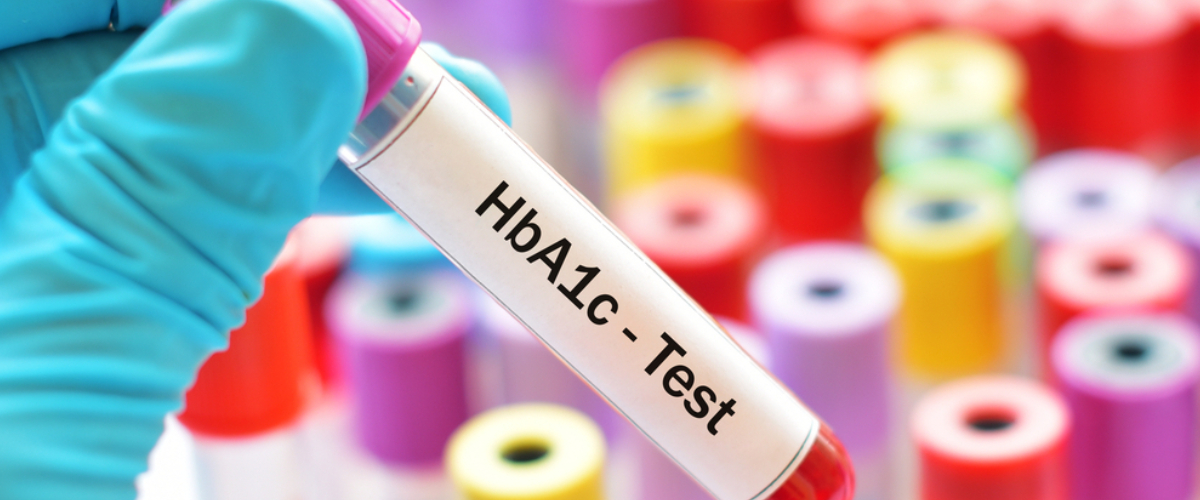
HbA1c is your average blood glucose (sugar) levels for the last two to three months. If you have diabetes, an ideal HbA1c level is 48mmol/mol (6.5%) or below.
If you’re at risk of developing type 2 diabetes, your target HbA1c level should be below 42mmol/mol (6%).
On this page we’ll go through what HbA1c means, and why aiming for your target level is so important. We’ll also explain the HbA1c test in more detail, and show you what you can do to lower your HbA1c levels if they’re too high. Plus, you can use our HbA1c converter tool if you’re looking to find out your level in % or mmol/mol.
What does HbA1c mean?
HbA1c is what’s known as glycated hemoglobin. This is something that’s made when the glucose (sugar) in your body sticks to your red blood cells. Your body can’t use the sugar properly, so more of it sticks to your blood cells and builds up in your blood. Red blood cells are active for around 2-3 months, which is why the reading is taken quarterly.
A high HbA1c means you have too much sugar in your blood. This means you’re more likely to develop diabetes complications, like serious problems with your eyes and feet.
Knowing your HbA1c level and what you can do to lower it will help you reduce your risk of devastating complications. This means getting your HbA1c checked regularly. It’s a vital check and part of your annual review. You’re entitled to get this test at least once a year. But if your HbA1c is high or needs a little more attention, it’ll be done every three to six months. It’s really important not to skip these tests, so if you haven’t had one in over a year contact your healthcare team.
Once you know your HbA1c level, it’s important that you understand what the results mean and how to stop them from getting too high. Even a slightly raised HbA1c level makes you more at risk of serious complications, so get all the facts here and be in the know about HbA1c.
The HbA1c test:
You can check these average blood sugar levels yourself, but you’ll have to buy a kit, whereas your healthcare professional will do it for free. It’s different from a finger-prick test, which is a snapshot of your blood sugar levels at a particular time, on a particular day.
You find out your HbA1c level by getting a blood test by a doctor or nurse. Your healthcare team will arrange this for you, but chase it up with your GP if you haven’t had one for a few months.
Most people will have the test every three to six months. But you may need it more often if you’re planning for a baby, your treatment has recently changed, or you’re having problems managing your blood sugar levels.
And some people will need the test less often, usually later on during pregnancy. Or need a different test altogether, like with some types of anaemia. A fructosamine test can be used instead, but it’s very rare.
An HbA1c test is also used to diagnose diabetes, and to keep an eye on your levels if you’re at risk of developing diabetes (you have prediabetes).
The test is sometimes called hemoglobin A1c or just A1c.
HbA1c levels and targets:
If you have diabetes, an ideal HbA1c level is 48mmol/mol (6.5%) or below.
But everyone’s different. So your healthcare team may give you an individual target level that takes into account your current level and when your next test is. So you can bring it down in stages and isn’t a sudden big drop.
And we’re not saying it’s easy to get to and stay at this level. We know it’s difficult, and we’re here to give you advice and information to help.
If you’re at risk of type 2 diabetes:
There are different target HbA1c levels for people at risk of developing type 2 diabetes. If you’ve been told you’re at risk, your target level should be below 42mmol/mol (6%). We have lots more information for you if you’re at risk of type 2.
Type 2 diabetes remission:
Remission is when a person with type 2 diabetes has healthy blood glucose (also called sugar) levels for the long-term, without taking any diabetes medications. We’re working with international experts to agree this, but our researchers used an HbA1c level of 48mmol/mol (6.5%) or less to define remission.
Type 2 diabetes is still a serious condition. It can be lifelong and get worse over time for many, but it doesn’t have to be like this for everyone. This can be life-changing. Find out more about type 2 diabetes remission.
HbA1c converter:
If you’re wondering how to convert HbA1c mmol/mol to %, or vice versa, our tool can help you.
Mmol/mol stands for millimoles per mole. A mole is a scientific unit often used to measure chemicals, and it has been the standard measurement for glucose levels since 2009. Before that, a percentage was used. That’s why measurements often have a percentage as well.
If you’re more used to the percentage system, use our converter tool below to find out your level in millimoles.
Sodium (Na) Test:
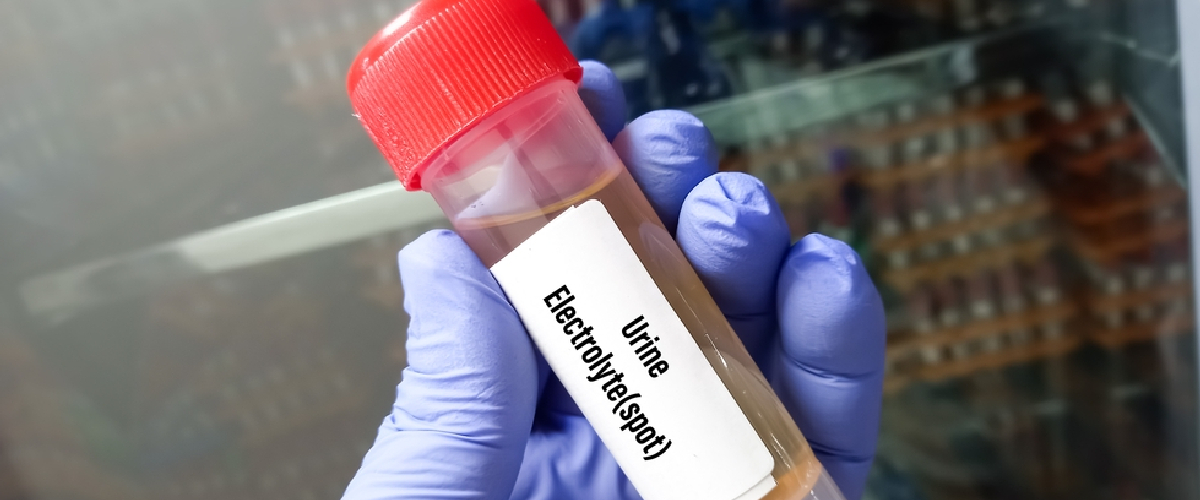
A urine test to check sodium levels is done to:
- Check the water and electrolyte balance of the body.
- Find the cause of symptoms from low or high levels of sodium.
- Check the progress of diseases of the kidneys or adrenal glands.
How It Is Done:
Urine sodium can be checked in a single urine sample, but it is more often measured in a 24-hour urine sample. A single urine sample (clean catch) may be taken at a health professional’s office or at home. A 24-hour sample is done at home.
Timed urine collection
You collect your urine for a period of time, such as over 4 or 24 hours. Your doctor will give you a large container that holds about 1 gallon. You will use the container to collect your urine.
When you first get up, you empty your bladder.
But don’t save this urine. Write down the time you began.
For the set period of time, collect all your urine.
Each time you urinate during this time period, collect your urine in a small, clean container. Then pour the urine into the large container. Don’t touch the inside of either container with your fingers.
Don’t get toilet paper, pubic hair, stool (feces), menstrual blood, or anything else in the urine sample.
Keep the collected urine in the refrigerator for the collection time.
Empty your bladder for the last time at or just before the end of the collection period.
Add this urine to the large container. Then write down the time.
Clean-catch urine collection:
- Wash your hands before you collect the urine.
- Prepare the container.
- If the container has a lid, remove the lid and set it down with the inner surface up.
- Clean the area around your penis or vagina.
- Start to urinate into the toilet or urinal.
- Collect the urine in the container.
- After the urine has flowed for several seconds, place the collection container in the stream. Collect about 2 ounces (a quarter cup) of this “midstream” urine without stopping the flow. Don’t touch the rim of the container to your genital area.
- Finish urinating.
- Replace the lid on the container.
- Wash your hands.
Results are ready in 1 day.
Each lab has a different range for what’s normal. Your lab report should show the range that your lab uses for each test. The normal range is just a guide. Your doctor will also look at your results based on your age, health, and other factors. A value that isn’t in the normal range may still be normal for you.
Many conditions can affect sodium levels. Your doctor will talk with you about any abnormal results that may be related to your symptoms and past health.
What is a Urinalysis (also called a “urine test”)?

Tests to Measure Kidney Function, Damage and Detect Abnormalities:
Healthy kidneys remove wastes and excess fluid from the blood. Blood and urine tests show how well the kidneys are doing their job and how quickly body wastes are being removed. Urine tests can also detect whether the kidneys are leaking abnormal amounts of protein, a sign of kidney damage. Here’s a quick guide to the tests used to measure kidney function.
Serum Creatinine:
Creatinine is a waste product that comes from the normal wear and tear on muscles of the body. Creatinine levels in the blood can vary depending on age and body size. A creatinine level of greater than 1.2 for women and greater than 1.4 for men may be an early sign that the kidneys are not working properly. As kidney disease progresses, the level of creatinine in the blood rises.
Glomerular Filtration Rate(GFR):
This test is a measure of how well the kidneys are removing wastes and excess fluid from the blood. It is calculated from the serum creatinine level using age and gender. Normal GFR can vary according to age (as you get older it can decrease). The normal value for GFR is 90 or above. A GFR below 60 is a sign that the kidneys are not working properly. Once the GFR decreases below 15, one is at high risk for needing treatment for kidney failure, such as dialysis or a kidney transplant.
Urinary Incontinence:
At least 10 million Americans suffer from incontinence, which means that they are not able to control the times when they urinate. In some cases, the loss of urine is so small that people are hardly aware of it. In other cases, the amount of leakage is quite large. Only about 10 percent of people who suffer from incontinence seek treatment. Without treatment, many of these people stay at home and withdraw from life unnecessarily. Incontinence is not a disease, but it can be a symptom of disease.
Does pregnancy cause urinary incontinence?
Pregnant women may have a small amount of urine leakage due to the pressure of the baby against the bladder and the muscles that support it. Usually, this leakage occurs when the woman coughs or sneezes. The problem generally goes away within three or four months after the baby is born. It is helpful if the woman does exercises, called Kegel exercises, to strengthen the muscles. Sometimes, women who have had children are more likely to develop incontinence when they get older due to weakening of the muscles that support the bladder. This is sometimes treated by medications, but surgery may be needed in some cases.
Which diseases can cause incontinence?
Diabetes, strokes and nerve diseases, such as multiple sclerosis. These diseases can damage the nerves that control the bladder which is where urine is stored before it leaves the body. These diseases can also weaken the “sphincter,” a ring of muscle around the opening of the bladder. This ring usually keeps urine from leaking out. Men can have incontinence from problems such as overgrowth of the prostate gland or cancer of the prostate gland, both of which can block the flow of urine. In these cases, urine leaks out when the bladder becomes too full.
What are liver function tests?

Liver function tests (also known as a liver panel) are blood tests that measure different enzymes, proteins, and other substances made by the liver. These tests check the overall health of your liver. The different substances are often tested at the same time on a single blood sample, and may include the following:
- Albumin, a protein made in the liver
- Total protein. This test measures the total amount of protein in the blood.
- ALP (alkaline phosphatase), ALT (alanine transaminase), AST (aspartate aminotransferase), and gamma-glutamyl transferase (GGT). These are different enzymes made by the liver.
- Bilirubin, a waste product made by the liver.
- Lactate dehydrogenase (LD), an enzyme found in most of the body’s cells. LD is released into the blood when cells have been damaged by disease or injury.
- Prothrombin time (PT), a protein involved in blood clotting.
What are they used for?
Liver function tests are most often used to:
- Help diagnose liver diseases, such as hepatitis
- Monitor treatment of liver disease. These tests can show how well the treatment is working.
- Check how badly a liver has been damaged or scarred by disease, such as cirrhosis
- Monitor side effects of certain medicines
Why do I need liver function testing?
You may need liver function testing if you have symptoms of liver disease. These include:
- Jaundice, a condition that causes your skin and eyes to turn yellow
- Nausea and vomiting
- Diarrhea
- Abdominal pain
- Dark-colored urine
- Light-colored stool
- Fatigue
You may also need these tests if you have certain risk factors. You may be at higher risk for liver disease if you:
- Have a family history of liver disease
- Have alcohol use disorder, a condition in which you have difficulty controlling how much you drink
- Think you have been exposed to a hepatitis virus
- Take medicines that may cause liver damage
A health care professional will take a blood sample from a vein in your arm, using a small needle. After the needle is inserted, a small amount of blood will be collected into a test tube or vial. You may feel a little sting when the needle goes in or out. This usually takes less than five minutes.
Will I need to do anything to prepare for the test?
You may need to fast (not eat or drink) for 10-12 hours before the test.
Are there any risks to the test?
There is very little risk to having a blood test. You may have slight pain or bruising at the spot where the needle was put in, but most symptoms go away quickly.
What do the results mean?
If one or more of your liver function test results were not normal, it may mean your liver is damaged or not working properly. Liver damage can be caused by a number of different conditions, including:
- Hepatitis A
- Hepatitis B
- Hepatitis C
- Alcohol use disorder, which includes alcoholism.
- Liver cancer
- Diabetes
If you have questions about your results, talk to your health care provider. Learn more about laboratory tests, reference ranges, and understanding results.
Is there anything else I need to know about liver function tests?
If any of your liver function tests were not normal, your provider may need more tests to confirm or rule out a specific diagnosis. These tests may include more blood tests and/or a liver biopsy. A biopsy is a procedure that removes a small sample of tissue for testing.
Full Body Checkup

Nowadays, people ignore minor health problems that later become the cause of major diseases. Therefore, everyone should pay attention to every problem related to their body. By contacting a good doctor, you can get your general check-up or full body check-up done. It is a routine test in which all the body systems are tested easily, such as blood test, urine test, stool test, diabetes test, thyroid test, etc. However, by getting the entire body examined, diseases can be detected in advance. Apart from this, to keep the body healthy, a full body check-up must be done at least once a year. Probably many people must be wondering what is a full body check-up and who should get it done? Let’s elaborate on this topic on today’s article.
What is full body check-up?
Full body check-up is not mandatory for everyone; it is up to you if you want the information about all the systems of your body. But if you are experiencing any health issues, then you can get a full body check-up done to find out the disease accurately. However, the doctor recommends getting the blood test and the urine test done first. So that what is happening inside the body can be known. Apart from this, there are other tests also which should be done as per the advice of the doctor. The following article explains the general examination.
What tests are done in normal check-up?
Let me tell you, in a general health check-up, diabetes test, thyroid test, liver test, kidney test, hemoglobin test, etc. are advised by the doctor.
- Diabetes screening – Diabetes screening is common for people suffering from diabetes. This test is recommended in a medical examination to know the level of diabetes so that the person can know their blood sugar levels accurately.
- Thyroid testing – People who have thyroid problems are advised to undergo a thyroid test every month. Apart from this, people who do not have thyroid problems can get examined to know if they have this problem.
- Liver examination – The liver function test is done to confirm whether the liver is performing its function properly or not.
- Kidney examination – Kidney examination is done to know whether the kidney is functioning properly or not.
- Hemoglobin test – To check the level of hemoglobin in the body, a hemoglobin test is done. The doctor explains whether the level of hemoglobin is increasing or decreasing in the body.
What tests are done in full body check-up?
The doctor often recommends people to undergo general tests. But if there is any kind of problem in the body, then to find out that problem, he recommends a full body check-up. There are no risks involved in full body check-up.
Following test are involved :
- For example, in a blood test, hemoglobin levels and polymorphs, lymphocytes, monocytes, platelets, etc. are measured. Apart from this, blood sugar and cholesterol levels are also tested by a blood test.
- Urine test – Urine test is done to find out the amount of glucose and protein.
- ECG – An ECG test is performed to detect any heart disease and measure the heart rate.
- Ear examination – Ear examination is done to examine the health and hearing capacity of the ear.
- Eye examination – To check the eye vision and whether the eye is functioning properly or not. Apart from this, eyes can be tested to detect myopia, hypermetropia, and color blindness, etc.
- X-rays and scans – Medical practitioners can perform X-rays and scans depending on the patient’s condition.
- Liver function tests – Some tests can be done to check for any abnormalities in the liver. These investigations include protein, SGOT, SGPT, albumin, globulin, bilirubin, etc.
What tests do doctors recommend to take based on age?
- Illnesses can occur to anybody at any time. Therefore, to avoid the risk of diseases, everyone should have their body examined once so that you can know whether you have the disease or not. But the doctors recommend the following tests based on the age group to people without any disease. Let us explain further.
- Those who are 20 years old should get their BP, height, and weight checked once a year along with eye and teeth examination. HIV screening should be done every 2 years.
- People who are 30 years and above should undergo blood tests for thyroid, diabetes, anemia, liver problems in addition to the tests mentioned above. Besides this, get the heart examined once a year for heart-related ailments.
- People who are 40 years and above should undergo a cardiovascular examination once in five years in addition to the investigations mentioned above.
- People who are 50 years and above should get BP, diabetes, eye check-up, ear test, and depression checked every year in addition to routine investigations.
- People aged 60-70 years should get their bones tested and screened every year in addition to normal tests. Also, tests for Alzheimer’s and dementia should be performed every year
Blood Test: Testosterone
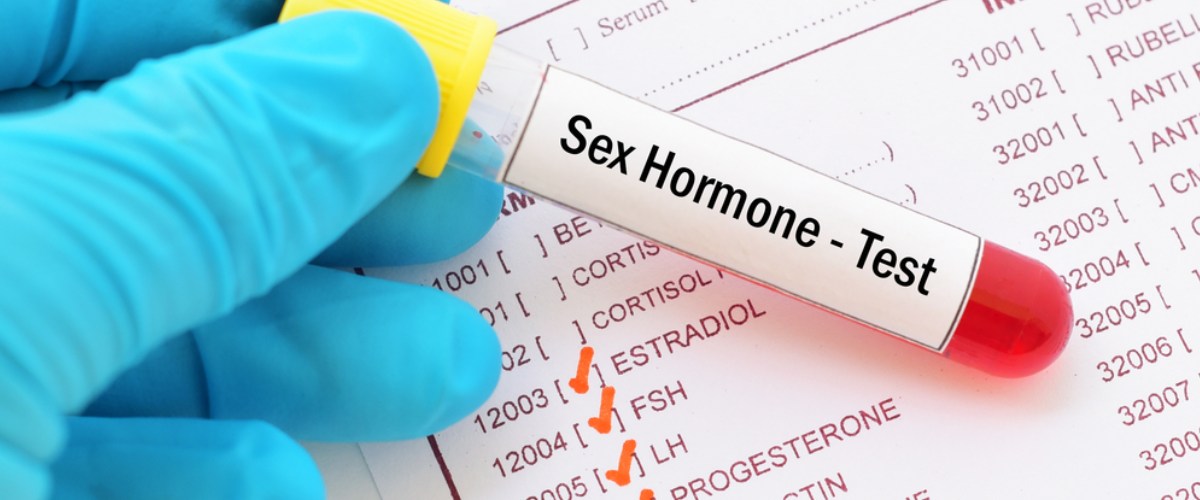
In young boys, testosterone levels are normally low. As puberty approaches usually between the ages of 10 and 14 the pituitary gland (a pea-sized gland near the base of the brain) secretes two hormones (luteinizing hormone, or LH; and follicle-stimulating hormone, or FSH) that work together to stimulate the testes to make testosterone.
Increased testosterone production is what causes boys to develop deeper voices, bigger muscles, and body and facial hair. It also helps the testes produce sperm, and it plays a role in speeding a boy’s growth in height during puberty. Testosterone is also important for bone health.
Two separate assessments may be performed as part of a testosterone test:
- total testosterone, which measures the entire amount of testosterone in the body, including both the amount bound to proteins that help transport the hormone through the bloodstream and free testosterone
- free testosterone, which measures only the testosterone that’s not attached to proteins
The doctor may order one or both tests. However, because sexual development involves many other hormones, a more complete picture can often be obtained by performing other tests at the same time, including an LH or FSH test. For example, low levels of testosterone can be due to a problem with the testes’ production of testosterone or to the pituitary gland not making enough of the hormones that stimulate the testes to produce testosterone.
Why It’s Done:
Doctors may order a testosterone blood test if a boy appears to be entering puberty earlier or later than expected. High levels are associated with precocious (early) puberty, while low levels may indicate a delay in sexual development. In girls, high levels can be associated with the appearance of masculine characteristics, such as facial hair.
The test may also be used in either boys or girls to check for damage or disease of the testes, ovaries, adrenal glands, or pituitary gland, or to check for steroid use.
In teens and adults, testosterone levels can help doctors evaluate fertility or menstrual problems and sexual function.
Preparation:
No special preparations are needed for this test. The doctor may want to perform the test in the morning, when testosterone levels usually are highest.
On the day of the test, it may help to have your child wear a T-shirt or short-sleeved shirt to allow easier access for the technician who will be drawing the blood.
The Procedure:
A health professional will clean the skin surface with antiseptic, and place an elastic band (tourniquet) around the upper arm to apply pressure and cause the veins to swell with blood. Then a needle is inserted into a vein (usually in the arm inside of the elbow or on the back of the hand) and blood is withdrawn and collected in a vial or syringe.
After the procedure, the elastic band is removed. Once the blood has been collected, the needle is removed and the area is covered with cotton or a bandage to stop the bleeding. Collecting blood for this test will only take a few minutes
harmone test for females:
Hormones are formed in the endocrine system and control most major bodily functions. A hormone imbalance could cause issues with bodily growth, sexual development, metabolism and other bodily functions. Estrogen and progesterone are the main hormones specific to women. Walk-In Lab offers several Hormone Blood Test Panels, as well as individual hormone testing such as Follicle-stimulating Hormone (FSH) and Luteinizing Hormone (LH) Blood Test, Testosterone Free (Direct) and Total Testosterone Test, and Cortisol Blood Test. Thank you for browsing our selection of Women Specific blood tests and panels. Shop additional Hormone Tests confidentially and order online without insurance or a doctor’s note.
Vitamin Test Profiles

Vitamin test is as necessary as similar other health check-ups
Vitamin is considered as one of the most important elements of the human body. Lack of vitamin may cause several kinds of diseases and it is known to all that some of those diseases are incurable too. Now the problem is, this is impossible to almost each and everyone to know about the exact percentage of vitamin in their body. That can be considered as the prime reason why we should go for a vitamin checkup.
Advantages of a vitamin checkup
- There are several categories of vitamin in a human body. A checkup can help you understand the exact kind of the vitamin that your body lacks.
- If you are suffering from the crisis of any specific kind of vitamin in your body, then a checkup can help the doctors find out the exact treatment for you.
It can also help you to know about the practices, exercises or the precautionary measures that are necessary to increase the amount of vitamin.
Vitamin Test Profiles:
Each and every day, the number of people who are facing several kinds of physical issues due to lack of vitamin in their body are aggressively increasing day by day. This can be considered as the prime reason why more and more people being interested to go for a vitamin check-up to stay away from the risks of facing miserable physical issues.
We have the best solution for you at this very moment. We provide affordable vitamin test profiles at a very reasonable cost that can terminate all your worries. Thyrocare offers various Vitamin profiles which price starts from 620. Feel free to call us to know more about the tests that each of our packages includes or to fetch more necessary information in this regard.
What Is HIV Testing?
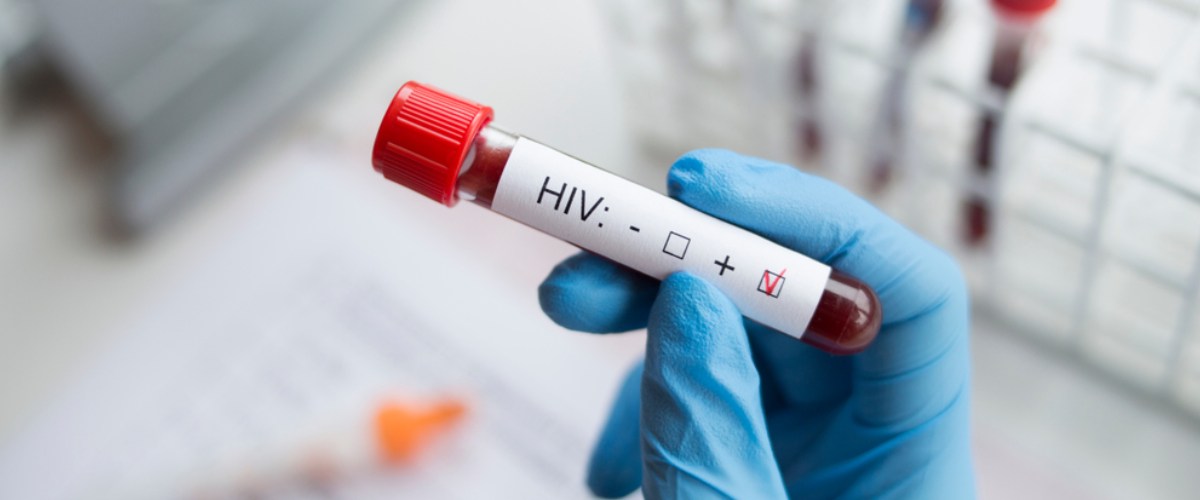
HIV testing, also called HIV screening, is the only way to know if you have the virus.
Several types of tests check your blood or other body fluids to see whether you’re infected. Most can’t spot HIV right away, because it takes time for your body to make antibodies or for enough of the virus to grow inside you.
Importance of HIV Testing
If you have the virus, finding out quickly means you can start treatment right away so you can feel better and live a long, full life. You can also take steps so you don’t pass HIV to other people.
Pregnant women should get tested because early treatment means you probably won’t pass it to your baby.
Who Should Get an HIV Test?
The CDC recommends that everyone in the United States between the ages of 13 and 64 get tested for HIV at least once.
You should be tested more often — at least once a year — if you’re at higher risk of getting HIV, including if you:
Have had several sexual partners
Had unprotected sex with someone who is or could be HIV-positive, including someone whose sexual history you don’t know
Injected drugs with a needle, syringe, or other device that someone else used first
Have had or are getting tested for tuberculosis, hepatitis, or any sexually transmitted disease, including syphilis, gonorrhea, chlamydia, or herpes
Have had sex for drugs or money
Had sex with someone who has a history of any of these
HIV Testing Types
Antibody screening tests
These tests check for protein that your body makes within 2 to 8 weeks of an HIV infection. They’re also called immunoassay or ELISA tests. They’re generally very accurate.
Rapid versions of these blood and oral fluid tests can give results in 30 minutes or less, but they may give negative results even when you’re infected. This is called a false negative.
Antibody/antigen combination tests
The CDC recommends these blood tests. They can detect HIV earlier than antibody screening tests. They check for HIV antigen, a protein called p24 that’s part of the virus and shows up 2 to 4 weeks after infection. They also check for HIV antibodies.
A rapid antibody/antigen test can give results in 20 minutes.
dengue test
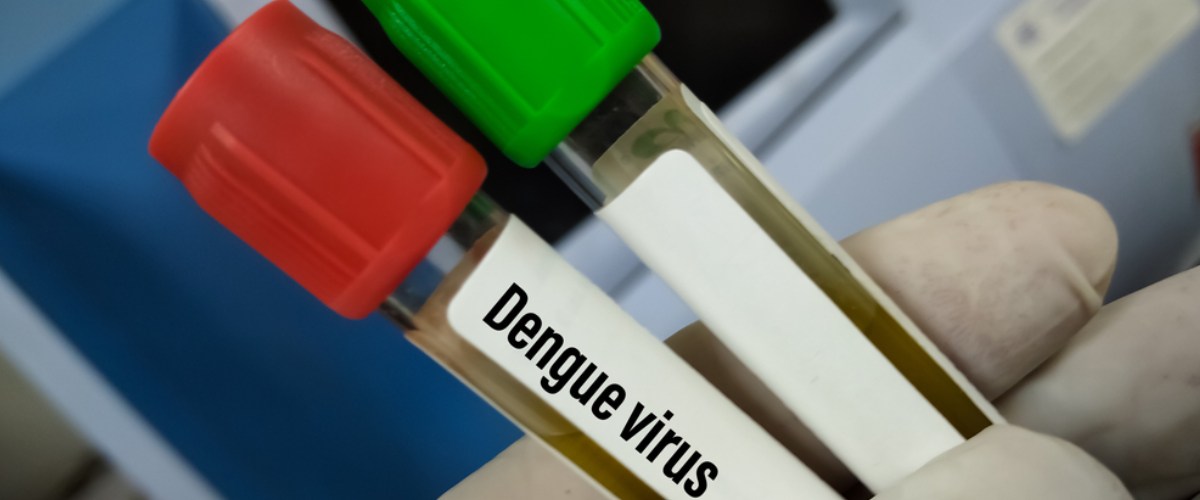
Most people who get dengue fever have no symptoms, or mild, flu-like symptoms such as fever, chills, and headache. These symptoms usually last for a week or so. But sometimes dengue fever can develop into a much more serious disease called dengue hemorrhagic fever (DHF).
DHF causes life-threatening symptoms, including blood vessel damage and shock. Shock is a condition that can lead to a severe drop in blood pressure and organ failure.
DHF mostly affects children under 10. It can also develop if you have dengue fever and get infected a second time before you have fully recovered from your first infection.
A dengue fever test checks your blood for signs of a dengue fever infection. There are two main types of dengue fever blood tests. One looks for the virus itself; the other checks for antibodies to the virus. Antibodies are proteins made by your immune system to fight foreign substances like viruses.
While there is no medicine that can cure dengue fever or DHF, other treatments can help relieve symptoms. This can make you more comfortable if you have dengue fever. It can be lifesaving if you have DHF.
Other names: dengue virus antibody, dengue virus by PCR
What is it used for?
A dengue fever test is used to find out if you have been infected with the dengue virus. It is mostly used for people who have symptoms of illness and have recently traveled to an area where dengue infections are common.
Why do I need a dengue fever test?
You may need this test if you live or have recently traveled to an area where dengue is common, and you have symptoms of dengue fever. Symptoms usually show up four to seven days after being bitten by an infected mosquito, and may include:
- Sudden high fever (104°F or higher)
- Swollen glands
- Rash on the face
- Severe headache and/or pain behind the eyes
- Joint and muscle pain
- Nausea and vomiting
- Fatigue
Dengue hemorrhagic fever (DHF) causes more severe symptoms and can be life-threatening. If you’ve had symptoms of dengue fever and/or have been in an area that has dengue, you may be at risk for DHF. Seek medical help immediately if you or your child has one or more of the following symptoms:
- Severe abdominal pain
- Vomiting that doesn’t go away
- Bleeding gums
- Nose bleeds
- Bleeding under the skin, which may look like bruises
- Blood in urine and/or stools
- Difficulty breathing
- Cold, clammy skin
- Restlessness
What happens during a dengue fever test?
Your health care provider will probably ask about your symptoms and for details on your recent travels. If an infection is suspected, you will get a blood test to check for the dengue virus.
During a blood test, a health care professional will take a blood sample from a vein in your arm, using a small needle. After the needle is inserted, a small amount of blood will be collected into a test tube or vial. You may feel a little sting when the needle goes in or out. This usually takes less than five minutes.
Will I need to do anything to prepare for the test?
You don’t need any special preparations for a dengue fever test.
Are there any risks to the test?
There is very little risk to having a blood test. You may have slight pain or bruising at the spot where the needle was put in, but most symptoms go away quickly.
What do the results mean?
A positive result means you probably have been infected with the dengue virus. A negative result can mean you aren’t infected or you were tested too soon for the virus to show up in testing. If you think you were exposed to the dengue virus and/or have symptoms of infection, talk to your health care provider about whether you need to be retested.
If your results were positive, talk to your health care provider about how to best treat your dengue fever infection. There are no medicines for dengue fever, but your provider will probably recommend that you get plenty of rest and drink lots of fluids to avoid dehydration. You may also be advised to take over-the-counter pain relievers with acetaminophen (Tylenol), to help ease body aches and reduce fever. Aspirin and ibuprofen (Advil, Motrin) are not recommended, as they may worsen bleeding.
If your results are positive and you have symptoms of dengue hemorrhagic fever, you may need to go to the hospital for treatment. Treatment may include getting fluids through an intravenous (IV) line, a blood transfusion if you’ve lost a lot of blood, and careful monitoring of blood pressure.
Learn more about laboratory tests, reference ranges, and understanding results.
Is there anything else I need to know about a dengue fever test?
If you will be traveling to an area where dengue is common, you can take steps to reduce your risk of getting infected with the dengue virus.
These include:
- Apply an insect repellent containing DEET on your skin and clothing.
- Wear long-sleeved shirts and pants.
- Use screens on windows and doors.
- Sleep under a mosquito net.
Also, a vaccine to prevent dengue fever is available in certain areas where the virus ins common.
What is a cholesterol test?
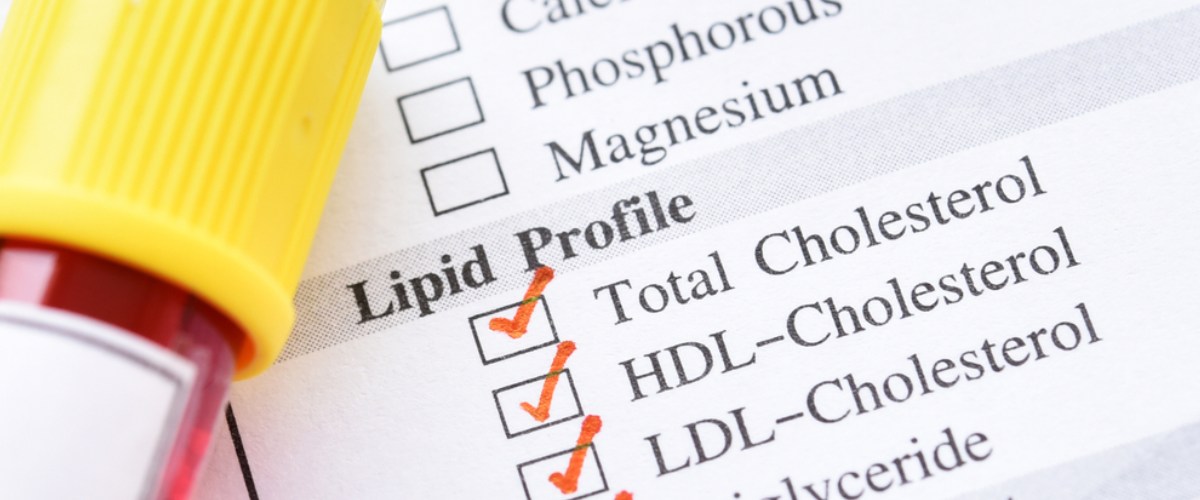
Cholesterol is a waxy, fat-like substance that’s found in your blood and every cell of your body. You need some cholesterol to keep your cells and organs healthy. Your liver makes all the cholesterol your body needs. But you can also get cholesterol from the foods you eat, especially meat, eggs, poultry, and dairy products. Foods that are high in dietary fat can also make your liver produce more cholesterol.
There are two main types of cholesterol: low-density lipoprotein (LDL), or “bad” cholesterol, and high-density lipoprotein (HDL), or “good” cholesterol. A cholesterol test is a blood test that measures the amount of each type of cholesterol and certain fats in your blood.
Too much LDL cholesterol in your blood may put you at risk for heart disease and other serious conditions. High LDL levels can cause the build-up of plaque, a fatty substance that narrows the arteries and blocks blood from flowing normally. When blood flow to the heart is blocked, it can cause a heart attack. When blood flow to the brain is blocked, it can lead to stroke and peripheral artery disease.
Other names for a cholesterol test: Lipid profile, Lipid panel
What is it used for?
If you have high cholesterol, you may not experience any symptoms at all, but you could be at significant risk for heart disease. A cholesterol test can give your health care provider important information about the cholesterol levels in your blood. The test measures:
- LDL levels. Also known as the “bad” cholesterol, LDL is the main source of blockages in the arteries.
- HDL levels. Considered the “good” cholesterol, HDL helps get rid of “bad” LDL cholesterol.
Total cholesterol. The combined amount of low-density lipoprotein (LDL) cholesterol and high-density lipoprotein (HDL) cholesterol in your blood.
Triglycerides A type of fat found in your blood. According to some studies, high levels of triglycerides may increase the risk of heart disease, especially in women.
VLDL levels. Very low-density lipoprotein (VLDL) is another type of “bad” cholesterol. Development of plaque on the arteries has been linked to high VLDL levels. It’s not easy to measure VLDL, so most of the time these levels are estimated based on triglyceride measurements.
Why do I need a cholesterol test?
Your doctor may order a cholesterol test as part of a routine exam, or if you have a family history of heart disease or one or more of the following risk factors:
- High blood pressure
- Type 2 diabetes
- Smoking
- Excess weight or obesity
- Lack of physical activity
- A diet high in saturated fat
- Your age may also be a factor, because your risk for heart disease increases as you get older.
What happens during a cholesterol test?
A health care professional will take a blood sample from a vein in your arm, using a small needle. After the needle is inserted, a small amount of blood will be collected into a test tube or vial. You may feel a little sting when the needle goes in or out. This usually takes less than five minutes.
Cholesterol tests are usually done in the morning, as you may be asked to refrain from eating for several hours prior to the test.
You may also be able to use an at-home kit to test for cholesterol. While instructions may vary between brands, your kit will include some kind of device to prick your finger. You’ll use this device to collect a drop of blood for testing. Be sure to follow the kit instructions carefully.
Also, be sure to tell your health care provider if your at-home test results shown your cholesterol level is higher than 200 mg/dl.
Will I need to do anything to prepare for the test?
You may need to fast–no food or drink–for 9 to 12 hours before your blood is drawn. Your health care provider will let you know if you need to fast and if there are any special instructions to follow.
Are there any risks to the test?
There is very little risk to having a blood test. You may have slight pain or bruising at the spot where the needle was put in, but most symptoms go away quickly.
What do the results mean?
Cholesterol is usually measured in milligrams (mg) of cholesterol per deciliter (dL) of blood. The information below shows how the different types of cholesterol measurements are categorized.
A healthy cholesterol range for you may depend on your age, family history, lifestyle, and other risk factors. In general, low LDL levels and high HDL cholesterol levels are good for heart health. High levels of triglycerides may also put you at risk for heart disease.
The LDL on your results may say “calculated” which means it includes a calculation of total cholesterol, HDL, and triglycerides. Your LDL level may also be measured “directly,” without using other measurements. Regardless, you want your LDL number to be low.
Learn more about laboratory tests, reference ranges, and understanding results.
Is there anything else I need to know about my cholesterol levels?
High cholesterol can lead to heart disease, the number one cause of death in the United States. While some risk factors for cholesterol, such as age and heredity, are beyond your control, there are actions you can take to lower your LDL levels and reduce your risk, including:
- Eating a healthy diet. Reducing or avoiding foods high in saturated fat and cholesterol can help reduce the cholesterol levels in your blood.
- Losing weight. Being overweight can increase your cholesterol and risk for heart disease.
- Staying active. Regular exercise may help lower your LDL (bad) cholesterol levels and raise your HDL (good) cholesterol levels. It may also help you lose weight.
- Talk to your health care provider before making any major change in your diet or exercise routine.
jaundice test?

jaundice is a condition in which the skin, whites of the eyes and mucous membranes turn yellow because of a high level of bilirubin, a yellow-orange bile pigment. Jaundice has many causes, including hepatitis, gallstones and tumors. In adults, jaundice usually doesn’t need to be treated.
What is jaundice?
Jaundice is a condition in which the skin, sclera (whites of the eyes) and mucous membranes turn yellow. This yellow color is caused by a high level of bilirubin, a yellow-orange bile pigment. Bile is fluid secreted by the liver. Bilirubin is formed from the breakdown of red blood cells.
SYMPTOMS AND CAUSES
What causes jaundice?
Jaundice can be caused by a problem in any of the three phases in bilirubin production.
Before the production of bilirubin, you may have what’s called unconjugated jaundice due to increased levels of bilirubin caused by:
- Reabsorption of a large hematoma (a collection of clotted or partially clotted blood under the skin).
- Hemolytic anemias (blood cells are destroyed and removed from the bloodstream before their normal lifespan is over).
During production of bilirubin, jaundice can be caused by:
- Viruses, including Hepatitis A, chronic Hepatitis B and C, and Epstein-Barr virus infection (infectious mononucleosis).
- Alcohol.
- Autoimmune disorders.
- Rare genetic metabolic defects.
- Medicines, including acetaminophen toxicity, penicillins, oral contraceptives, chlorpromazine (Thorazine®) and estrogenic or anabolic steroids.
After bilirubin is produced, jaundice may be caused by obstruction (blockage) of the bile ducts from:
- Gallstones.
- Inflammation (swelling) of the gallbladder.
- Gallbladder cancer.
- Pancreatic tumor.
What are the symptoms of jaundice?
Sometimes, the person may not have symptoms of jaundice, and the condition may be found accidentally. The severity of symptoms depends on the underlying causes and how quickly or slowly the disease develops.
If you have a short-term case of jaundice (usually caused by infection), you may have the following symptoms and signs:
- Fever.
- Chills.
- Abdominal pain.
- Flu-like symptoms.
- Change in skin color.
- Dark-colored urine and/or clay-colored stool.
If jaundice isn’t caused by an infection, you may have symptoms such as weight loss or itchy skin (pruritus). If the jaundice is caused by pancreatic or biliary tract cancers, the most common symptom is abdominal pain. Sometimes, you may have jaundice occurring with liver disease if you have:
- Chronic hepatitis or inflammation of the liver.
- Pyoderma gangrenosum (a type of skin disease).
- Acute hepatitis A, B or C.
- Polyarthralgias (inflammation of the joints).
DIAGNOSIS AND TESTS
How is jaundice diagnosed?
Doctors diagnose jaundice by checking for signs of liver disease such as:
- Bruising of the skin.
- Spider angiomas (abnormal collection of blood vessels near the surface of the skin).
- Palmar erythema (red coloration of the palms and fingertips).
Urinalysis (urine testing) that’s positive for bilirubin shows that the patient has conjugated jaundice. The findings of urinalysis should be confirmed by serum testing. The serum testing will include a complete blood count (CBC) and bilirubin levels.
Your doctor will also do an exam to determine the size and tenderness of your liver. He or she may use imaging (ultrasonography and computer tomographic (CT) scanning) and liver biopsy (taking a sample of the liver) to further confirm diagnosis.
MANAGEMENT AND TREATMENT
How is jaundice treated?
Jaundice usually doesn’t require treatment in adults (it’s a more severe problem in infants). The causes and complications of jaundice can be treated. For instance, if itching is bothersome, it may be eased by cholestyramine .
What are some of the complications/side effects of the treatments of jaundice?
- Constipation.
- Bloating.
- Stomach pain.
- Gas.
- Upset stomach.
- Vomiting.
- Diarrhea.
PREVENTION
Can jaundice be prevented?
Since there are many causes of jaundice, it’s hard to provide specific prevention measures. Some general tips include:
- Avoid hepatitis infection.
- Stay within recommended alcohol limits.
- Maintain a healthy weight.
- Manage your cholesterol.
What is the risk you’ll develop jaundice?
During the production of bilirubin, middle-aged women and men, in general, are more affected. People who have hepatitis and drink excessive alcohol are also at increased risk.
Thyroid Tests

Health care professionals use thyroid tests to check how well your thyroid is working and to find the cause of problems such as hyperthyroidism or hypothyroidism. The thyroid is a small, butterfly-shaped gland in the front of your neck that makes two thyroid hormones: thyroxine (T4) and triiodothyronine (T3). Thyroid hormones control how the body uses energy, so they affect nearly every organ in your body, even your heart.
Thyroid tests help health care professionals diagnose thyroid diseases such as
- hyperthyroidism—when thyroid hormone levels are too high
- Graves’ disease, the most common cause of hyperthyroidism
- hypothyroidism—when thyroid hormones levels are too low
- Hashimoto’s disease, of the most common cause of hypothyroidism
- thyroid nodules and thyroid cancer NIH external link
What blood tests do doctors use to check thyroid function?
Doctors may order one or more blood tests to check your thyroid function. Tests may include thyroid stimulating hormone (TSH), T4, T3, and thyroid antibody tests.
For these tests, a health care professional will draw blood from your arm and send it to a lab for testing. Your doctor will talk to you about your test results.
TSH test
Health care professionals usually check the amount of TSH in your blood first. TSH is a hormone made in the pituitary gland that tells the thyroid how much T4 and T3 to make.
A high TSH level most often means you have hypothyroidism, or an underactive thyroid. This means that your thyroid isn’t making enough hormone. As a result, the pituitary keeps making and releasing TSH into your blood.
A low TSH level usually means you have hyperthyroidism, or an overactive thyroid. This means that your thyroid is making too much hormone, so the pituitary stops making and releasing TSH into your blood.
If the TSH test results are not normal, you will need at least one other test to help find the cause of the problem.
T4 tests
A high blood level of T4 may mean you have hyperthyroidism. A low level of T4 may mean you have hypothyroidism.
In some cases, high or low T4 levels may not mean you have thyroid problems. If you are pregnant or are taking oral contraceptives NIH external link, your thyroid hormone levels will be higher. Severe illness or using corticosteroids—medicines to treat asthma, arthritis, skin conditions, and other health problems—can lower T4 levels. These conditions and medicines change the amount of proteins in your blood that “bind,” or attach, to T4. Bound T4 is kept in reserve in the blood until it’s needed. “Free” T4 is not bound to these proteins and is available to enter body tissues. Because changes in binding protein levels don’t affect free T4 levels, many healthcare professionals prefer to measure free T4.
T3 test
If your health care professional thinks you may have hyperthyroidism even though your T4 level is normal, you may have a T3 test to confirm the diagnosis. Sometimes T4 is normal yet T3 is high, so measuring both T4 and T3 levels can be useful in diagnosing hyperthyroidism.
Thyroid antibody tests
Measuring levels of thyroid antibodies may help diagnose an autoimmune thyroid disorder such as Graves’ disease—the most common cause of hyperthyroidism—and Hashimoto’s disease—the most common cause of hypothyroidism. Thyroid antibodies are made when your immune system attacks the thyroid gland by mistake. Your health care professional may order thyroid antibody tests if the results of other blood tests suggest thyroid disease.
What imaging tests do doctors use to diagnose and find the cause of thyroid disease?
Your health care professional may order one or more imaging tests to diagnose and find the cause of thyroid disease. A trained technician usually does these tests in your doctor’s office, outpatient center, or hospital. A radiologist, a doctor who specializes in medical imaging, reviews the images and sends a report for your health care professional to discuss with you.
Ultrasound
Ultrasound of the thyroid is most often used to look for, or more closely at, thyroid nodules. Thyroid nodules are lumps in your neck. Ultrasound can help your doctor tell if the nodules are more likely to be cancerous.
For an ultrasound, you will lie on an exam table and a technician will run a device called a transducer over your neck. The transducer bounces safe, painless sound waves off your neck to make pictures of your thyroid. The ultrasound usually takes around 30 minutes.
Thyroid scan
Health care professionals use a thyroid scan to look at the size, shape, and position of the thyroid gland. This test uses a small amount of radioactive iodine to help find the cause of hyperthyroidism and check for thyroid nodules. Your health care professional may ask you to avoid foods high in iodine, such as kelp, or medicines containing iodine for a week before the test.
For the scan, a technician injects a small amount of radioactive iodine or a similar substance into your vein. You also may swallow the substance in liquid or capsule form. The scan takes place 30 minutes after an injection, or up to 24 hours after you swallow the substance, so your thyroid has enough time to absorb it.
During the scan, you will lie on an exam table while a special camera takes pictures of your thyroid. The scan usually takes 30 minutes or less.
Thyroid nodules that make too much thyroid hormone show up clearly in the pictures. Radioactive iodine that shows up over the whole thyroid could mean you have Graves’ disease.
Even though only a small amount of radiation is needed for a thyroid scan and it is thought to be safe, you should not have this test if you are pregnant or breastfeeding.
Radioactive iodine uptake test
A radioactive iodine uptake test, also called a thyroid uptake test, can help check thyroid function and find the cause of hyperthyroidism. The thyroid “takes up” iodine from the blood to make thyroid hormones, which is why this is called an uptake test. Your health care professional may ask you to avoid foods high in iodine, such as kelp, or medicines containing iodine for a week before the test.
For this test, you will swallow a small amount of radioactive iodine in liquid or capsule form. During the test, you will sit in a chair while a technician places a device called a gamma probe in front of your neck, near your thyroid gland. The probe measures how much radioactive iodine your thyroid takes up from your blood. Measurements are often taken 4 to 6 hours after you swallow the radioactive iodine and again at 24 hours. The test takes only a few minutes.
If your thyroid collects a large amount of radioactive iodine, you may have Graves’ disease, or one or more nodules that make too much thyroid hormone. You may have this test at the same time as a thyroid scan.
Even though the test uses a small amount of radiation and is thought to be safe, you should not have this test if you are pregnant or breastfeeding.
What tests do doctors use if I have a thyroid nodule?
If your health care professional finds a nodule or lump in your neck during a physical exam or on thyroid imaging tests, you may have a fine needle aspiration biopsy to see if the lump is cancerous or noncancerous.
For this test, you will lie on an exam table and slightly bend your neck backward. A technician will clean your neck with an antiseptic and may use medicine to numb the area. An endocrinologist who treats people with endocrine gland problems like thyroid disease, or a specially trained radiologist, will place a needle through the skin and use ultrasound to guide the needle to the nodule. Small samples of tissue from the nodule will be sent to a lab for testing. This procedure usually takes less than 30 minutes. Your health care professional will talk with you about the test result when it is available.
Seeman Analysis

Semen analysis, also known as a sperm count test, analyzes the health and viability of a man’s sperm. Semen is the fluid containing sperm (plus other sugar and protein substances) that’s released during ejaculation. A semen analysis measures three major factors of sperm health:
- the number of sperm
- the shape of the sperm
- the movement of the sperm, also known as “sperm motility”
Doctors will often conduct two or three separate sperm analyses to get a good idea of sperm’s health. According to the American Association for Clinical Chemistry (AACC), the tests should be conducted at least seven days apart and over the course of two to three months. Sperm counts can vary on a daily basis. Taking an average of the sperm samples can give the most conclusive result.
Test for male infertility
A semen analysis is often recommended when couples are having problems getting pregnant. The test will help a doctor determine if a man is infertile. The analysis will also help determine if low sperm count or sperm dysfunction is the reason behind infertility.
Test for vasectomy success
Men who have had a vasectomy undergo semen analysis to make sure no sperm are in their semen. In a vasectomy, the tubes that send sperm from the testicles to the penis are cut and sealed as a permanent form of birth control. After a vasectomy, doctors often recommend that men take a sperm analysis once a month for three months to ensure that sperm is no longer present in their semen.
How to prepare for semen analysis:
Your doctor will let you know what you should do in preparation for the semen analysis. It’s very important to follow these instructions for accurate results.
To get the best sample:
Avoid ejaculation for 24 to 72 hours before the test.
Avoid alcohol, caffeine, and drugs such as cocaine and marijuana two to five days before the test.
Stop taking any herbal medications, such as St. John’s wort and echinacea, as instructed by your healthcare provider.
Avoid any hormone medications as instructed by your healthcare provider.
Discuss any medications you’re taking with your doctor.
How is semen analysis conducted?
You’ll need to provide your doctor with a semen sample for a semen analysis. There are four main ways to collect a semen sample:
- masturbation
- sex with a condom
- sex with withdrawal before ejaculation
- ejaculation stimulated by electricity
- Masturbation is considered the preferred way to get a clean sample.
Getting a good sample
Two main factors are crucial to having a good testing sample. First, the semen must be kept at body temperature. If it gets too warm or too cold, the results will be inaccurate. Second, the semen must be delivered to the testing facility within 30 to 60 minutes of leaving the body.
Test interference
Some factors can negatively affect the test, including:
- semen coming into contact with spermicide
- taking the test when you’re ill or stressed
- lab technician error
- contamination of the sample
- There are no known risks associated with a sperm analysis.
If semen analysis results aren’t within normal limits and handling of the specimen isn’t a factor, your doctor may also consider whether you’re taking the following substances, which can affect your sperm count:
- alcohol
- caffeine
- herbs
- tobacco
Results for at-home tests are usually available within 10 minutes. A normal sperm count (above 20 million sperm per milliliter of semen) from a home test doesn’t necessarily mean that a man is fertile, since it doesn’t consider all the possible causes of male infertility.
If you are concerned about your fertility, it’s best to get a lab test done by a medical professional. This will give you a more comprehensive evaluation of your fertility.
What are normal results?
After your semen sample is collected, your test results should be ready within 24 hours to one week, depending on the laboratory you go to. When a doctor reviews sperm analysis test results, there are many factors to consider. An analysis after vasectomy looks for the presence of sperm, but the analysis to look for fertility issues is much more in depth. Your doctor will take each of the following results into account:
Sperm shape
A normal result for sperm shape is that more than 50 percent of sperm are normally shaped. If a man has greater than 50 percent of sperm that are abnormally shaped, this reduces his fertility. A laboratory may identify abnormalities in the sperm’s head, midsection, or tail. It’s also possible the sperm could be immature and therefore not able to effectively fertilize an egg.
Movement
For a normal result, more than 50 percent of sperm must move normally an hour after ejaculation. Sperm movement, or motility, is important to fertility because sperm must travel to fertilize an egg. An automated system analyzes the sperm for movement and rates them on a scale of 0 to 4. A score of 0 means the sperm are not moving, and a score of 3 or 4 represents good movement.
PH
A pH level should be between 7.2 and 7.8 to achieve a normal result. A pH level higher than 8.0 could indicate the donor has an infection. A result less than 7.0 could indicate the specimen is contaminated or that the man’s ejaculatory ducts are blocked.
Volume
The volume of semen for a normal result should be greater than 2 milliliters. A low semen volume could indicate a low amount of sperm to fertilize an egg. An excess fluid volume could also mean the amount of sperm present is diluted.
Liquefaction
It should take 15 to 30 minutes before semen liquefies. While semen is initially thick, its ability to liquefy, or turn to a watery consistency, helps sperm to move. If semen does not liquefy in 15 to 30 minutes, fertility could be affected.
Sperm count
The sperm count in a normal semen analysis should be between 20 million to over 200 million. This result is also known as sperm density. If this number is low, conceiving can be more difficult.
Appearance
The appearance should be whitish to gray and opalescent. Semen that has a red-brown tint could indicate the presence of blood, while a yellow tint could indicate jaundice or be a medication side effect.
What is an ELISA test?

An enzyme-linked immunosorbent assay, also called ELISA or EIA, is a test that detects and measures antibodies in your blood. This test can be used to determine if you have antibodies related to certain infectious conditions. Antibodies are proteins that your body produces in response to harmful substances called antigens.
An ELISA test may be used to diagnose:
- HIV, which causes AIDS
- Lyme disease
- pernicious anemia
- Rocky Mountain spotted fever
- rotavirus
- squamous cell carcinoma
- syphilis
- toxoplasmosis
- varicella-zoster virus, which causes chickenpox and shingles
- Zika virus
ELISA is often used as a screening tool before more in-depth tests are ordered. A doctor may suggest this test if you’re having signs or symptoms of the conditions above. Your doctor may also order this test if they want to rule out any of these conditions.
How is the test performed?
The ELISA test is simple and straightforward. You’ll probably need to sign a consent form, and your doctor should explain the reason for doing the test.
The ELISA test involves taking a sample of your blood. First, a healthcare provider will cleanse your arm with an antiseptic. Then, a tourniquet, or band, will be applied around your arm to create pressure and cause your veins to swell with blood. Next, a needle will be placed in one of your veins to draw a small sample of blood. When enough blood has been collected, the needle will be removed and a small bandage will be placed on your arm where the needle was. You’ll be asked to maintain pressure at the site where the needle was inserted for a few minutes to reduce blood flow.
This procedure should be relatively painless, but your arm may throb a little after it’s done.
The blood sample will be sent to a laboratory for analysis. In the lab, a technician will add the sample to a petri dish containing the specific antigen related to the condition for which you are being tested. If your blood contains antibodies to the antigen, the two will bind together. The technician will check this by adding an enzyme to the petri dish and observing how your blood and the antigen react.
You may have the condition if the contents of the dish change color. How much change the enzyme causes allows the technician to determine the presence and amount of antibody.
How do I prepare for the test?
There’s no special preparation for this test. The blood draw lasts only a few moments and is mildly uncomfortable. Tell your healthcare provider if you have a fear of needles or become lightheaded or faint at the sight of blood or needles.
Are there any risks?
There are very few risks associated with this test. These include:
- infection
- feeling faint
- bruising
- bleeding more than usual
- Make sure to tell your doctor before the test if you’ve had trouble giving blood in the past, bruise easily, or have a bleeding disorder such as hemophilia.
What do the results mean?
How the test results are reported varies based on the laboratory that conducts the analysis. It also depends on the condition for which you’re being tested. Your doctor should discuss your results and what they mean. Sometimes, a positive result will mean that you don’t have the condition.
False positives and false negatives can occur. A false-positive result indicates you have a condition when you actually don’t. A false-negative result indicates you don’t have a condition when you actually do. Because of this, you may be asked to repeat the ELISA again in a few weeks, or your doctor may order more sensitive tests to confirm or refute the results.
What else do I need to know?
Although the test itself is relatively simple, waiting for the results or being screened for conditions such as HIV can cause a lot of anxiety. It’s important to remember that no one can force you to take the test. It’s voluntary. Make sure that you understand the laws in your state or the policy of the healthcare facility for reporting positive HIV results.
Discuss the test with your provider. Remember that diagnosing any possible infectious disease is the first step toward getting treatment and protecting others from the infection.
Symptoms,Diagnosis&Treatment
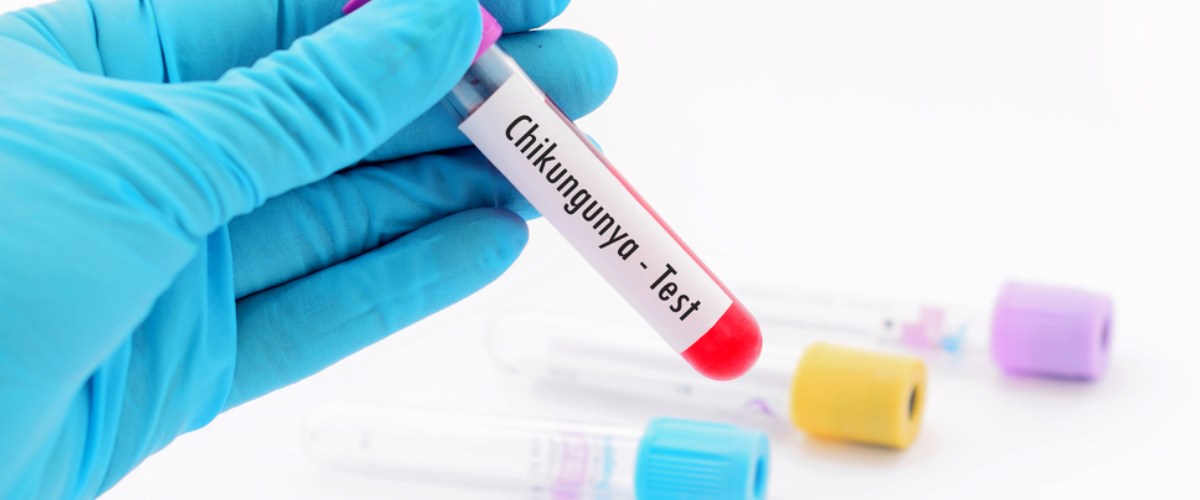
Symptoms, Diagnosis, & Treatment
Symptoms
- Most people infected with chikungunya virus will develop some symptoms.
- Symptoms usually begin 3–7 days after an infected mosquito bites you.
- The most common symptoms are fever and joint pain.
- Other symptoms may include headache, muscle pain, joint swelling, or rash.
- Chikungunya disease does not often result in death, but the symptoms can be severe and disabling.
- Most patients feel better within a week. In some people, the joint pain may persist for months.
- People at risk for more severe disease include newborns infected around the time of birth, older adults (≥65 years), and people with medical conditions such as high blood pressure, diabetes, or heart disease.
- Once a person has been infected, he or she is likely protected from future infections.
Diagnosis
- The symptoms of chikungunya are similar to those of dengue and Zika. These diseases are spread by the same mosquitoes that transmit chikungunya.
- See your healthcare provider if you develop the symptoms described above and have visited an area with chikungunya.
- If you have recently traveled, tell your healthcare provider when and where you traveled.
- Your healthcare provider may order blood tests to look for chikungunya or other similar viruses like dengue and Zika.
Treatment
- There is no vaccine to prevent or medicine to treat chikungunya virus.
- Treat the symptoms:
- Get plenty of rest.
- Drink fluids to prevent dehydration.
- Take medicine such as acetaminophen (Tylenol®) or paracetamol to reduce fever and pain.
- Do not take aspirin and other non-steroidal anti-inflammatory drugs (NSAIDS until dengue is ruled out to reduce the risk of bleeding).
- If you are taking medicine for another medical condition, talk to your healthcare provider before taking additional medication.
- If you have chikungunya, prevent mosquito bites for the first week of your illness.
- During the first week of infection, chikungunya virus can be found in an infected person’s blood and passed from that person to a mosquito through mosquito bites.
- An infected mosquito can then spread the virus to other people.
- Diagnostic TestingChikungunya virus infection should be considered in patients with acute onset of fever and polyarthralgia, especially travelers who recently returned from areas with known virus transmission.Laboratory diagnosis is generally accomplished by testing serum or plasma to detect virus, viral nucleic acid, or virus-specific immunoglobulin (Ig) M and neutralizing antibodies. Viral culture may detect virus in the first 3 days of illness; however, chikungunya virus should be handled under biosafety level (BSL) 3 conditions. During the first 8 days of illness, chikungunya viral RNA can often be identified in serum. Chikungunya virus antibodies normally develop toward the end of the first week of illness. Therefore, to definitively rule out the diagnosis, convalescent-phase samples should be obtained from patients whose acute-phase samples test negative.What type of tube should I collect blood in?
The best type of tube is serum separator (typically tiger/speckled-top). The blood should be allowed to coagulate and tubes should be spun to separate the serum from the clot prior to shipping.If a red-top is used (no additive), the blood must be allowed to coagulate, the tube centrifuged, and the serum drawn off into a clean tube prior to shipping. Heparin (green top) and EDTA (purple top) are unsuitable for CHIK testing.
Symptoms,Diagnosis&Treatment
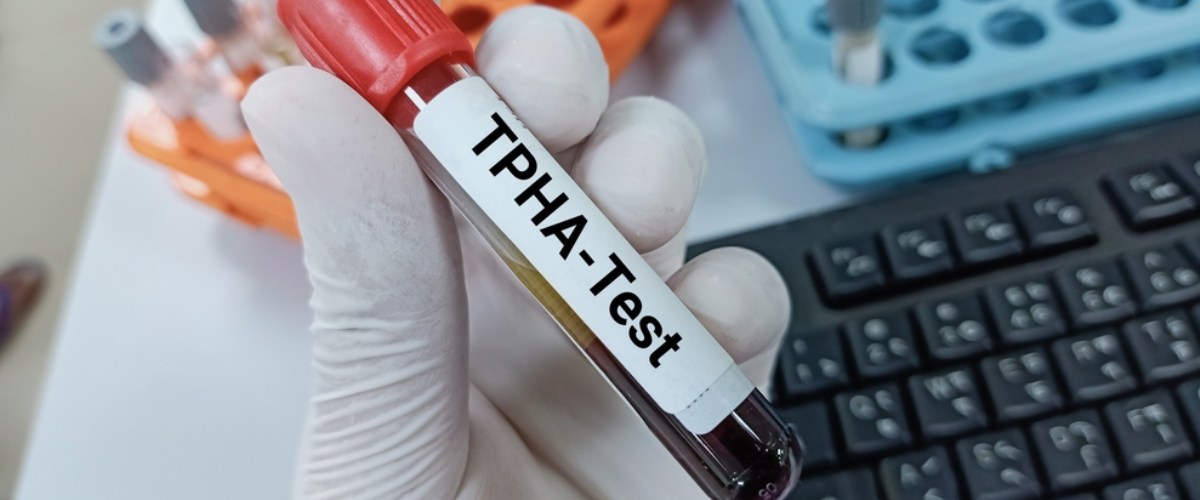
What Is Syphilis?
It is a sexually transmitted disease caused by the bacteria called Treponema pallidum. The disease is characterized by four stages namely primary, secondary, latent, and tertiary. The treatment for it depends on what is the stage of the infection. It is always a challenge to diagnose its initial symptoms as it appears only in the form of a small painless sore called chancre. But it is very important to diagnose the infection as early as possible. This helps in preventing damage to major organs of the body. TPHA is one of the important diagnostic tests used for its detection. So what is TPHA? It is an abbreviation for Treponema pallidum hemagglutination assay.
What Is A Tpha Test?
What is TPHA test? Treponema pallidum hemagglutination commonly known as TPHA is diagnostic test used to detect the dissolved amount of antibodies in the serum sample of a patient against the causative agents of syphilis. To be precise the TPHA test helps in the detection of Palladium antibodies via the hemagglutination method. The process involves sensitizing the red blood cells with T. palladium fragments. When exposed to the serum sample infected with syphilis the cells aggregate on the surface of the test dish.
What Are The Symptoms Of Syphilis Infection?
The TPHA symptoms depend upon what stage of syphilis the patient is. The first is the primary stage that occurs only after a period of 3 to 4 weeks the person has contracted the bacteria. The initial symptoms begin with a small round sore that is seemingly painless. It can be transmitted if anyone comes in direct contact with the sore. During the secondary stage, the person may develop skin rashes and sore throat. Other than these some may also have fatigue, weight loss, aching joints and headache. The third stage of the disease is called the latent stage or the hidden stage. One may not find any noticeable symptoms at this stage, but the bacteria remain active inside the body. The last stage of the infection is called tertiary syphilis and is considered to be one of the most life-threatening stages. Some of the potential outcomes include memory loss, mental illness, blindness etc.
Are There Any Preparations Needed To Undergo The Tpha Test?
There are no specific preparations required for the test, and it is a simple blood routine. If there be a requirement for fasting the doctor would give prior information of the same.
How Is The Tpha Test Done?
The TPHA blood test is a simple blood routine and does not require any specific preparations. A sample for the test is drawn by injecting the needle into a vein in your arm. Later it is sent to the lab for further analysis. In the lab, the TPHA test procedure is carried out by using a test card with three wells.
In the first one 10μL of the patients, the serum sample is added. Next 190 μL of the diluent is added and mixed using a micropipette.
In the second well 75μL of the control cells.
In the third 75μL of the test cells are added. After this 25μL of diluted serum is added on each of the wells and the contents are mixed thoroughly. The plate is then incubated for 45-60 mins in room temperature away from direct sunlight. Running a positive and negative control along with the test serum is mandatory.
How To Interpret The Tpha Test Results?
The TPHA test meaning can be interpreted by the agglutination intensity that could range from – to 4+. Understanding these cases gives a clear picture of the TPHA positive results.
The TPHA lab test positive results could be interpreted as follows
- It is 4+ if there is a uniform mat of the cells covering the entire well.
- It is 3+ if most of the well is covered by a uniform mat of cells.
- A lesser density mat surrounded by a slight ring(+2) is another scenario of a TPHA test positive
- The intensity of the mat decreases and is surrounded by a denser ring with a distinctly open Centre.
If there is a small clear Centre and the cells are settled to a compact bottom, the result can be interpreted as TPHA negative. In case of a TPHA test negative or the results confer to the TPHA test normal range there is no further investigation required. But in case, of an intermediate positive result, MHATP and FTA-ABS test are prescribed.
How the Test is Performed
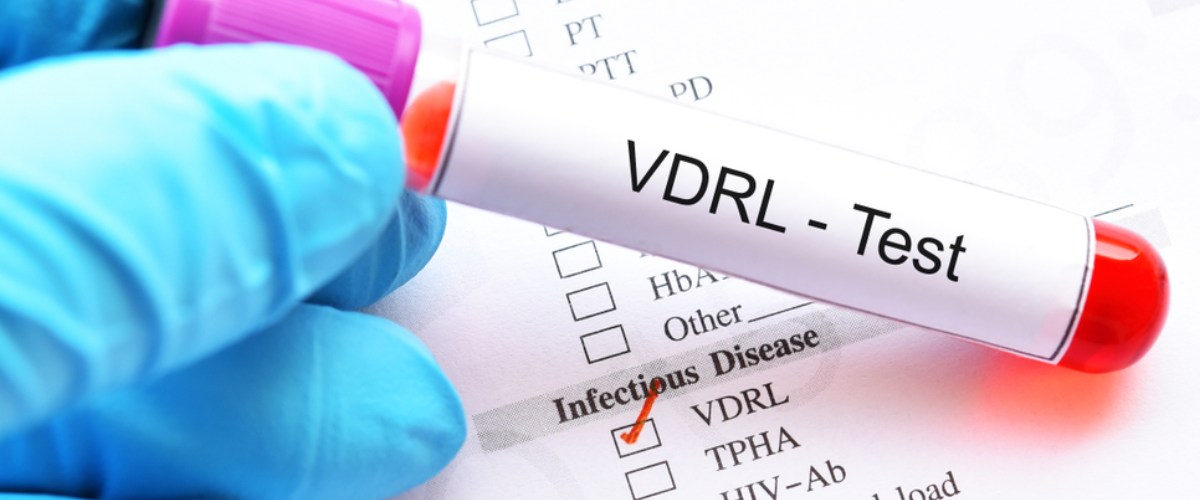
The VDRL test is a screening test for syphilis. It measures substances (proteins), called antibodies, which your body may produce if you have come in contact with the bacteria that cause syphilis.
How the Test is Performed
The test is most often done using a blood sample. It can also be done using a sample of spinal fluid. This article discusses the blood test.
A blood sample is needed.
How the Test will Feel
When the needle is inserted to draw blood, some people may feel moderate pain. Others feel only a prick or stinging. Afterward, there may be some throbbing or a slight bruise. This soon goes away.
Why the Test is Performed
This test is used to screen for syphilis. The bacteria that cause syphilis is called Treponema pallidum.
Your health care provider may order this test if you have signs and symptoms of a sexually transmitted illness (STI).
Syphilis screening is a routine part of prenatal care during pregnancy.
This test is similar to the newer rapid plasma reagin (RPR) test.
Normal Results
A negative test is normal. It means that no antibodies to syphilis have been seen in your blood sample.
The screening test is most likely to be positive in the secondary and latent stages of syphilis. This test may give a false-negative result during early- and late-stage syphilis. This test must be confirmed with another blood test to make the diagnosis of syphilis.
Normal value ranges may vary slightly among different laboratories. Some labs use different measurements or test different samples. Talk to your provider about the meaning of your specific test results.
What Abnormal Results Mean
A positive test result means you may have syphilis. If the test is positive, the next step is to confirm the results with an FTA-ABS test, which is a more specific syphilis test.
The VDRL test’s ability to detect syphilis depends on the stage of the disease. The test’s sensitivity to detect syphilis nears 100% during the middle stages; it is less sensitive during the earlier and later stages.
Some conditions may cause a false-positive test, including:
- HIV/AIDS
- Lyme disease
- Certain types of pneumonia
- Malaria
- Systemic lupus erythematosus
The body does not always produce antibodies specifically in response to the syphilis bacteria, so this test is not always accurate.
Risks
There is little risk involved with having your blood taken. Veins and arteries vary in size from one person to another and from one side of the body to the other. Taking blood from some people may be more difficult than from others.
Other risks associated with having blood drawn are slight, but may include:
- Excessive bleeding
- Fainting or feeling lightheaded
- Multiple punctures to locate veins
- Hematoma (blood accumulating under the skin)
- Infection (a slight risk any time the skin is broken)
Venereal disease research laboratory test; Syphilis – VDRL
Hepatitis C Symptoms & Treatment

Hepatitis C (also known as hep C or HCV) is part of a group of hepatitis viruses that attack the liver.
It’s mainly passed on through contaminated needles, either from injecting drugs or from needle stick injuries in healthcare settings. It can also be transmitted sexually, especially during anal sex or other types of sex that may involve blood.
Some groups are more at risk of getting hepatitis C than others, including people who use drugs, people in prisons, men who have sex with men, health workers and people living with HIV.
Chronic hepatitis C can be serious and without appropriate treatment and care, can cause liver disease and liver cancer leading to death. Treatment, where available, can cure hepatitis C in most cases.
How do you get and prevent hepatitis C?
Hepatitis C is passed on when infected blood gets into another person’s body. It is very infectious and the virus can stay alive outside the body for up to several weeks.
Contaminated needles and infected blood
You can get hepatitis C from sharing contaminated needles, syringes and other injecting equipment during recreational drug use. Banknotes and straws used for snorting may also pass the virus on.
Being exposed to unsterilised tattoo and body piercing equipment can also pass hepatitis C on. Occasionally, you can get it from sharing a towel, razor blades or a toothbrush if there is infected blood on them.
Hepatitis C infection is also passed on in healthcare settings, from needle stick injuries or from medical and dental equipment that has not been properly sterilised. In countries where blood products are not routinely screened, you can also get hepatitis C by receiving a transfusion of unscreened blood and blood products.
You can prevent hepatitis C by:
- never sharing needles and syringes or other items that may be contaminated with infected blood (even old or dried blood can contain the virus)
- only having tattoos, body piercings or acupuncture in a professional setting, where new, sterile needles are used
- following the standard infection control precautions, if you’re working in a healthcare setting.
Sex
Hepatitis C can be passed on via sex without a condom or dental dam with someone who has the virus, even if they don’t have symptoms. Hepatitis C has been detected in semen and vaginal fluids, but infection via these routes is thought to be unlikely.
Sex which leads to blood exposure is the main way hepatitis C is passed on sexually. These types of sexual activities include anal sex, fisting, when a woman is on her period and rough sex which leads to tearing or cuts. Sharing of uncovered or unwashed sex toys can also pass it on.
Because of this, sexual transmission of hepatitis C is more common among populations that practise anal sex, such as men who have sex with men. Sexual transmission during vaginal sex is thought to be very rare.
The risk of hepatitis C infection is increased when you have another STI – especially one that causes sores. People living with HIV are also more likely to get hepatitis C.
How do I protect myself from getting hepatitis C during sex?
- Test for hepatitis C and know the status of your sexual partners.
- Use condoms, especially during anal sex, rough sex or if you’re menstruating. If you’re having sex with a new partner or if you have multiple partners, it’s a good idea to use condoms consistently.
- Use dental dams and latex gloves for rimming, fingering and fisting.
- Test regularly for STIs.
If you’re living with HIV, taking your antiretroviral treatment for HIV keeps your immune system strong so you’re less likely to get other infections, including hepatitis C.
from condoms, other types of contraception such as the contraceptive pill and pre-exposure prophylaxis (PrEP) for HIV offer no protection against hepatitis C or other sexually transmitted infections.
If you’ve been diagnosed with hepatitis C, it’s advised that you avoid sex until you have finished your treatment and a health care professional says it’s safe.
Mother to child
Hepatitis C can be passed on from a pregnant woman to her child during pregnancy and birth, although this is rare. The risk of passing hepatitis on is slightly higher for mothers living with both HIV and hepatitis C (called co-infection).
Antivirals used to treat hepatitis are not currently recommended for pregnant women because there isn’t enough information to know if the drugs are safe for your unborn baby.
If you have hepatitis C and are pregnant speak to your doctor. They will be able to give you advice on how to keep yourself and your baby safe during pregnancy and birth.
If you’re planning to have a baby, your doctor may recommend that you treat the hepatitis C before you get pregnant.
Breastfeeding with hepatitis C is considered safe. But if you have cracked or bleeding nipples, it’s generally recommended to stop breastfeeding until they have healed.
What do hepatitis C symptoms look like?
Hepatitis C infection can go through two stages: acute and chronic. In the early, or ‘acute’ stage, most people don’t have symptoms. If they do develop symptoms, these can include:
- flu-like symptoms, tiredness, high temperature and aches and pains
- loss of appetite
- tummy (abdominal) pain
- jaundice, meaning your skin and the whites of your eyes turn yellow
While for some people, the infection will clear without treatment, in most cases, acute infection will develop into long-term ‘chronic’ infection. Chronic infection may not become apparent for a number of years until the liver displays signs of damage. These symptoms can include:
- mental confusion (often called ‘brain fog’) and depression – these are specific to hepatitis C
- constantly feeling tired
- nausea, vomiting or tummy pain
- dark urine (pee)
- pale faeces (poo)
- jaundice
- itchy skin
- feeling bloated
- joint and muscle pain
Without treatment, chronic hepatitis C can cause scarring of the liver (cirrhosis), which can cause the liver to stop working properly. A small number of people with cirrhosis develop liver cancer and these complications can lead to death. Other than a liver transplant, there’s no cure for cirrhosis. However, treatments can help relieve some of the symptoms.
How do you test for hepatitis C?
A simple blood test carried out by a healthcare professional will show whether you have the virus. You may also be given an extra test to see if your liver is damaged.
If you’ve got hepatitis C you should be tested for other STIs. It’s important that you tell your recent sexual partner/s so they can also get tested and treated. Many people who have hepatitis C do not notice anything wrong, and by telling them you can help to stop the virus being passed on. It can also stop you from getting the infection again.
How do you treat hepatitis C?
People with acute infection do not always need treatment, because their immune system may clear hepatitis C on its own. If you test positive during the acute stage, your doctor may ask you to come back after a few months to re-test and to see if you need any treatment.
If people develop chronic infection, they will need treatment to help clear the virus. Where available, treatment with drugs called direct-acting antivirals (DAAs) can cure hepatitis in most cases. These are usually taken for 8-12 weeks. Your doctor will also check your liver for any damage.
If you’ve had hepatitis C in the past, you’re not immune to future infections – which means you can get it again. You can also still get other types of hepatitis, and having hepatitis C together with another type is more serious.
If you’ve already had hepatitis C, it’s advisable to have the vaccination against hepatitis A and B to protect your liver from further damage.
Whether you have symptoms or not, don’t have sex until your healthcare professional says you can.
Hepatitis C and HIV
Co-infection with hepatitis C and HIV is common because they are both transmitted in similar ways. While both infections can be treated, it can complicate things, so it’s important that your doctor is fully aware of your infections.
That’s because if you’re living with HIV and become infected with hepatitis C, you’re more likely to develop chronic hepatitis C. The infection is also more likely to progress quickly and become serious. This is even true when you are taking your antiretroviral treatment for HIV and your viral load is low.
If you think you’ve been exposed to hepatitis C, it’s important to get tested and treated with DAAs if necessary. In some cases, your doctor may make changes to your antiretroviral treatment while they are treating your hepatitis C infection.
Hepatitis A Virus Test
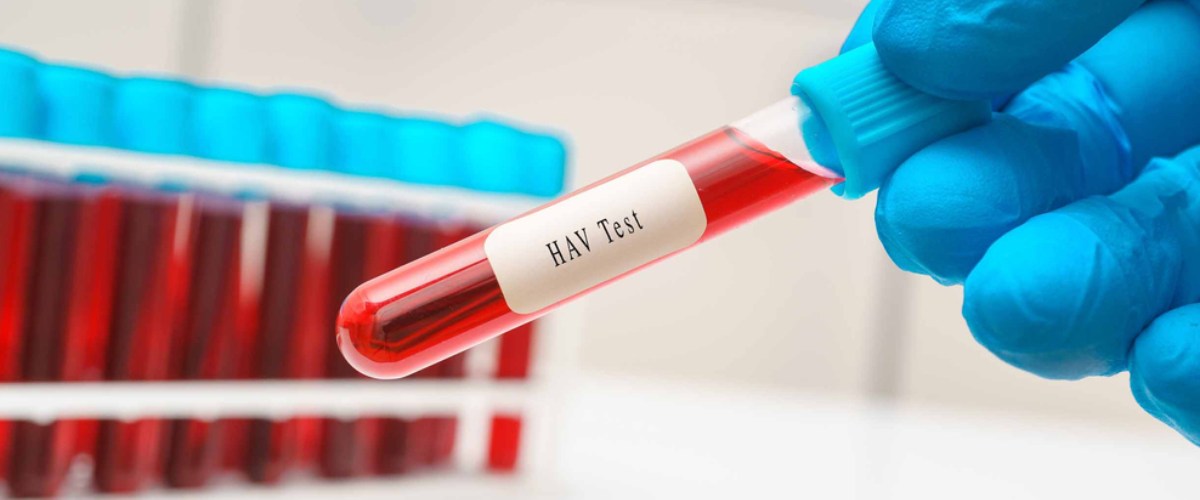
The hepatitis A virus test is a blood test that shows if you have a hepatitis A infection now or had it in the past.
The test looks for antibodies made by the body to fight the virus. They will be in your blood if you have a hepatitis A infection now or have had one in the past.
Hepatitis A IgM antibodies.
These can be found as early as 2 weeks after you are first infected. They disappear 3 to 12 months after the infection.
Hepatitis A IgG antibodies.
These appear 8 to 12 weeks after you are first infected. They stay in your blood and protect you from hepatitis A permanently.
How It Feels
- When a blood sample is taken, you may feel nothing at all from the needle. Or you might feel a quick sting or pinch.
Risks
- There is very little chance of having a problem from this test. When a blood sample is taken, a small bruise may form at the site.
Diagnosis of Hepatitis B

Diagnosis of hepatitis B is based upon examination of the blood for characteristic antigens and antibodies associated with the disease.
How is the presence of HBsAg in blood tested?
Common tests available are Rapid / Spot/ Card Test: Result within 10 minutes
Quantitative assays: ELISA/ ELFA/ CMIA/ ECLIA/ MEIA – Result in 24 to 48 hours
What does it mean if your HBsAg is positive? It means that the surface antigen of Hepatitis B virus is present in one’s blood or serum. There are two more antigens released from Hepatitis B virus, namely core antigen (cAg) and envelope antigen (eAg),and out of these two, only eAg is seen in blood in addition to surface antigen.
Treatment of Hepatitis B
Getting advice or professional opinion is NOT a free service, as you are communicating with the world’s one & only clinical specialist on Hepatitis B. Once you are diagnosed to have Hepatitis B or C, you have only 2 options , either meet Dr John K C OR die of Liver Cancer/Cirrhosis. This statement looks awkward, but it is a frank reality, you should admit it.
Public behaves like a fool or idiot when this health issue occurs to them or to any family members. They select a doctor on what basis.? They assume that if they meet a specialist in a very big hospital, their all problems would be solved permanently. They do not know anything that is happening in a medical field. All specialists work in any hospital for a monthly pay of 2 lakhs rupees after signing an agreement with management to provide that hospital, a fixed income on monthly basis -‘target’ it is called.. In short, their monthly salary is based on this ‘target’. So specialists do wanted and mostly unwanted tests on the patients like blood tests, Fibroscan, CT scan, Endoscopy, MRI scan, Biopsy etc… Patients do not know the key point in a treatment. Patients think that, by doing all these tests, Hepatitis B viruses/Hepatitis C viruses would be removed from the body.. This is the foolishness or idiocy of the public. On doing these tests, you are just trying to study the nature of viruses. Treatment means taking something to kill viruses.
When Diagnosed With Hepatitis-B
The search begins to find out a dependable curative treatment in any system of medicine. Which doctor to meet? Gastroenterologist having the longest list of alphabets after his name OR a doctor who has an expertise in treating Hepatitis B or C infection? How do you choose the doctor ? Very good Question as well. You should meet a doctor having a long clinical expertise in treating Hepatitis B or C infection. Identify a doctor who has a long track record treating Hepatitis B & C cases alone, than a person who has a book knowledge of Hepatitis B or C. Study has nothing to do with practice, study enables one to achieve more degrees, while practice is purely on clinical skills and experience. This can be identified from the confidence with which the doctor speaks, treated cases in his website or any publications/other platforms. Identify a doctor who is lucky to hold at least one cured negative case report with his hand.
Treatment Options for Hepatitis-B
In Modern Medicine/English Medicine/Allopathy: No treatment is available for HBsAg, because of two reasons, only few antiviral drugs in market and also this HBsAg is not a whole virus, but a part of a virus. I have not seen a single case that turned negative through this treatment. If anybody says there is treatment available, it is to be viewed with double caution, as that can empty your pockets by doing all unwanted tests (for the sake of commission/incentives from laboratories). Definitely there is logic in doing those tests, if a treatment is available. You may ask the doctor for the success of the treatment in that system. All that glitters is not gold. Don’t mix the skill and expertise of a doctor with the number of alphabets after the name/whether sitting in a multi storied building/travelling in BMW/wearing Allen Solly shirt. Just see the expertise of the doctor through the success of his treatment. Have you ever seen a cured case of that doctor? Then why you want to consult him? ?Even after consulting those so called specialists, you need to come to Dr John K C for completely removing the viruses, even the traces of it. What is the use of knowing the colour, blood group, caste, height, weight and Aadhar Number of Hepatitis B Virus by doing all the tests including even Fibroscan and Biopsy when there is nothing available to remove viruses from the body ?
In Ayurveda: When there is jaundice, Ayurveda can give results. For carrier cases, this approach has limited scope.
In Homoeopathy: Homoeopathy offers the best treatment for Hepatitis B carriers. Both chronic Hepatitis B and carrier cases of Hep B are curable with Homoeopathic medicines. These drugs correct the body constitutionally by removing all foreign particles, even if it is not a whole virus. However, success of Homoeopathic treatment depends on patient taking the medicines without fail even for a day. The success in treatment also depends partly on dedication and partly on the expertise in treating those kinds of diseases. The expertise stretching over 20 years is enough and more to treat any Hepatitis B infection. Just see the success in the cured cases published in the homepage of this website. Success of a system of treatment is something to be experienced, than to be heard.


